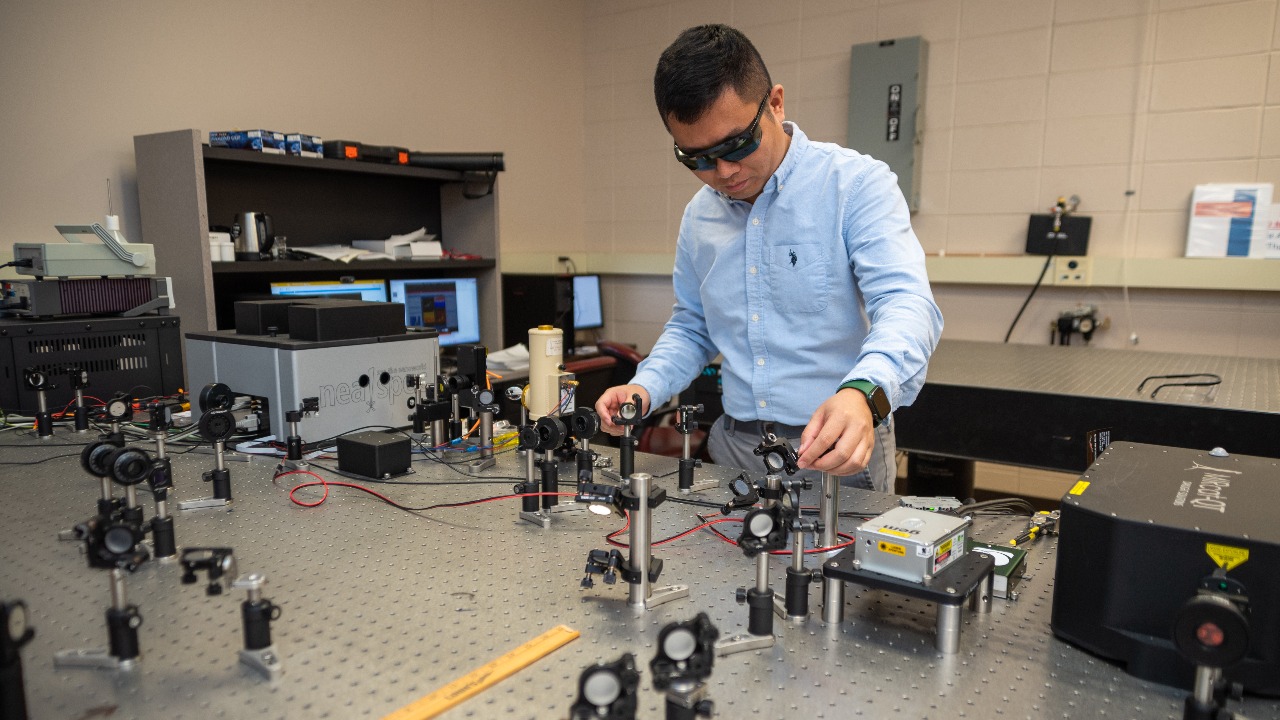NSF funds Auburn materials engineering research into combining light and matter
Published: Aug 25, 2025 10:00 AM
By Jeremy Henderson
Talk about new dimensions of research...
The National Science Foundation’s Division of Materials Research (DMR) has awarded Siyuan Dai, associate professor and Ginn Faculty Achievement Fellow in the Department of Materials Engineering, a $600,000 grant to explore ways of fusing light and matter that are literally opening new dimensions in nano-optics.
DMR supports discoveries about the capabilities of matter that typically transcend traditional disciplinary boundaries. The result? Semiconductors, lithium-ion batteries — transformative technologies that shape modern life.
Though he describes it as merely “combining fundamental physics with practical applications,” Dai's project — his fourth NSF grant since 2020 — is so transformative it sounds like science fiction.
It involves an interaction that produces what Dai calls “nano-light,” which could not only greatly advance the new processes of quantum computing and energy harvesting, but also revolutionize a discipline as fundamental as chemistry.
“Our work focuses on polaritons — waves that combine light and matter — to unlock new ways of controlling energy and information at the nanoscale,” he said. “By designing materials that mix different dimensions and have unusual symmetries, we can create nano-light that behaves in ways never seen before, such as moving only in certain directions, changing its mode profile or transferring energy with extraordinary efficiency.”
That could translate to faster and more energy-efficient optical circuits, improved heat management in electronics, and innovations in sensing and medical technologies.
In addition to providing doctoral and postdoctoral researchers under Dai opportunities to provide integral support to the project, the DMR funding will cover advanced experiments and material fabrication. Beyond the lab, Dai plans to expand outreach by offering K–12 participants hands-on experiences in materials science.
“The latest recognition from the NSF is very affirming,” Dai said. “It’s motivation to continue using cutting-edge nano-imaging tools and computational modeling to push the boundaries of what’s possible, and we hope to inspire the next generation of materials researchers in the process."
Media Contact: , jdh0123@auburn.edu, 334-844-3591


